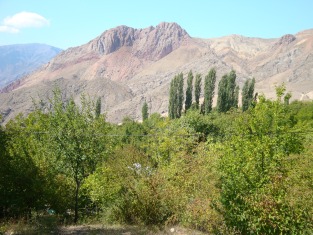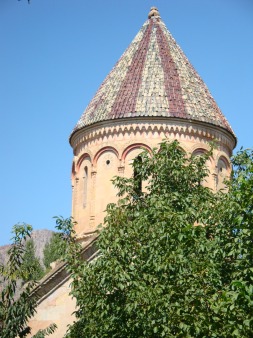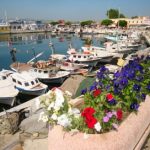Between the 9th and 14th centuries a large part of the northeast corner of Turkey formed part of the Kingdom of Georgia. If you drive from Erzurum to Yusufeli you will be able to visit a series of remote ruined churches left behind as mementoes. It’s a lovely drive, with soaring mountains on either side of the road and orchards full of apples, mulberries and walnuts surrounding villages of rickety wooden houses.
There’s little of interest to stop for until you reach the small town of Tortum. Then after another 25 km you’ll spot a turn-off on the left to Bağbaşı (the old Haho) where the beautiful 10th-century church of St Mary boasts a soaring drum-like structure topped by a tile-clad dome. For anyone who has seen the more famous Akdamar church on its island in the middle of Lake Van, it would be easy to assume from its appearance that this was another Armenian structure but history supplies an explanation for the confusion. Apparently the Georgian Bagratids, who ruled this area from the 9th century were related to another group of Bagratids who governed medieval Armenia. Not surprisingly both groups favoured a broadly similar architectural style.
The church of St Mary became a mosque in the 17th century when its congregation converted to Islam. Consequently if you start your explorations here it may be easier to imagine what the other ruined churches looked like in their heyday.
North of Bağbaşı you come to Tortum Gölü (Lake Tortum), a great place for a picnic. In winter the Tortum Şelalesi (Tortum Waterfall) makes a spectacular sight.
In summer a better place to pause might be Çamlıyamaç (once Öşkvank) where a viewpoint overlooks the lake and a gorge carved out by the Çoruh River. Çamlıyamaç is also home to a stupendous ruined 10th-century cathedral, its frescoes, inscriptions and blind arcading now exposed to the elements.
Continuing north you arrive at a turn-off on the right to Olur and then, along that road, to a turning to İşhan, a village with a particularly beautiful setting high up on a plateau. İşhan plays host to the ruins of the vast Church of the Mother of God built between the 8th and 11th centuries. Forty years ago the frescoes were still well-preserved. Now they are fading fast although you can still admire the hardier horseshoe-shaped arches that form a blind arcade around the apse. A surviving dedication stone in the Georgian language credits King Bagrat III (1000-1014) as the church’s founder. Today its dome balances precariously above a void.
North of the Olur turn-off the main road from Erzurum passes through a spectacular stretch of the Çoruh Canyon with thick bands of alternating colour in the rock. A few more km and the road heads off to Yusufeli.
A turning on the left leads to Tekkale (One Castle) where the ruins of a single castle perch so high up on the rocks it’s almost impossible to imagine how the stones could have been got up there.
From Tekkale a rough road continues to Dörtkilise (Four Churches) which may indeed have had four churches once but now has just the one fine 10th-century example right beside the road. It’s a beautiful but stark building covered in stone arcading but still retaining some of its frescoes including a portrait of King David Magistros (r. 961-1000).
After that, a bit of backtracking will return you to the main road to Yusufeli.
Sleeping
The best choice of hotels is to be found in Erzurum.
Cemil’s Pension at Tekkale (Tel: 0466-811 2908) is atmospheric, if simple.
There is also very basic (and limited) accommodation in Uzundere.
Transport info
To do justice to this part of Turkey you really need a car. Local buses are timed to get villagers to Erzurum or Yusufeli and back again in the same day which means that they rarely suit the needs of visitors.


